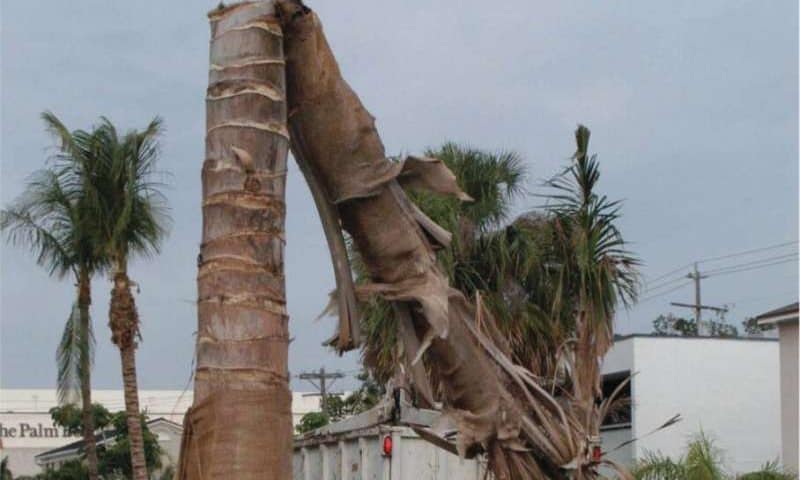Ever wonder why some palm varieties flourish while others suddenly bend at the trunk or topple over completely?
From the iconic coconut palm to towering royal palms, these signature features of Florida’s landscapes are facing a silent but serious threat: a fungal disease that can cause trunks to collapse and trees to die.
Now, scientists at the University of Florida Institute of Food and Agricultural Sciences (UF/IFAS) in Davie have developed a groundbreaking tool to detect which palms are at risk—without harming a single tree.
“Currently, information on disease resistance to fungal pathogens like Thielaviopsis is lacking in palms,” said Braham Dhillon a molecular plant pathologist at the UF/IFAS Fort Lauderdale Research and Education Center. “Understanding which palm species are resistant to the disease offers a choice to a wide range of stakeholders including homeowners, homeowner associations, developers, landscape architects, Department of Transportation operations and other agencies when deciding what palms they want to plant in their landscape.”
In a study recently published in Plant Disease, researchers unveiled a simple, fast and non-destructive test to see how different palm species respond to a fungal disease that causes trunk rot, a condition that can make palms buckle and die seemingly overnight and without warning.
The disease known as Thielaviopsis trunk rot, is caused by a lethal fungus that can infect almost every part of a palm, including roots, trunks, fronds and flowers. The researchers developed the methodology by testing palms at the U.S. Department of Agriculture’s Agricultural Research Service (USDA-ARS), a 197-acre research hub in Miami.
“This pioneering study represents a significant advancement in our comprehension of palm germplasm collection and its associated disease resistance,” said Sukhwinder Singh, a research leader at USDA-ARS. “By identifying and documenting the disease-resistance traits of these palm species, we are establishing a foundation for more resilient landscapes capable of withstanding the threats posed by major pathogens such as Thielaviopsis.”
This study represents the first large-scale survey of disease resistance in palms and is an important first step in building resilient palm landscapes, said Dhillon.
“Fungi in the group Thielaviopsis are very important pathogens around the globe as these can infect a wide variety of crops such as sugarcane, pineapple, bananas and palms,” said Dhillon. “On palms, these are very sneaky pathogens, as there are no telltale symptoms of the infection until a trunk collapses.”
Traditionally, testing palm disease resistance requires using entire plants, a process that is slow taking about six months to a year to see results, costly, labor intensive and deadly for the trees being studied. The new UF/IFAS method changes that by using only detached leaflets. These leaf pieces can be tested in a lab, giving scientists answers within just three days instead of months.
“Being able to use detached leaflets to test resistance is particularly advantageous in long-lived woody species like palms considering a vast majority of palms in the landscape have a single growing point on top of an unbranched trunk. With detached leaflets, we can test the same palm multiple times against multiple isolates,” he said.
Using the new testing method, the team evaluated 29 palm species from 17 genera. They discovered that 79% of palms resisted infection, while a few species, including Puerto Rico royal palms, coconut palms and buccaneer palms showed variability in resistance to the disease.
Beyond identifying which palms are at risk, the tool offers a faster way to test potential treatments, such as fungicides or biological controls, before moving to large-scale trials. It would also help identify the genetic variation in disease resistance to Thielaviopsis pathogens in palms and guide breeding and conservation efforts aimed at developing more resilient palm varieties. These findings may pave the way for a resilient and prosperous palm industry across the region and the country.
“Even though resistance information on 29 palm species was generated in this study, there is more work to be done,” said Dhillon. “In this study, only five out of the 12 palm species native to Florida were surveyed, and there are many other palm species popular in Florida’s landscape—Canary Island date palms, royal palms, Washingtonia palms and date palms—that still need to be tested.”

